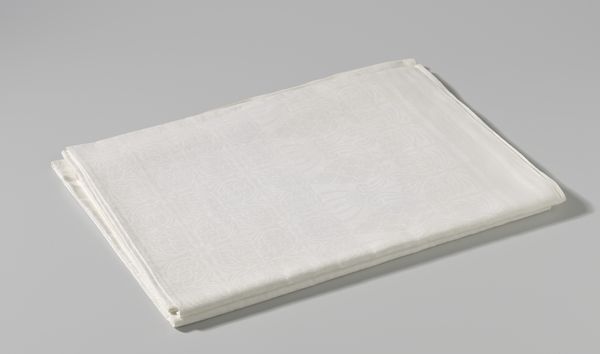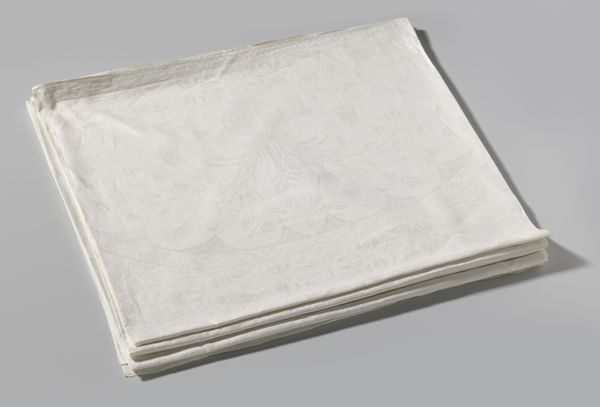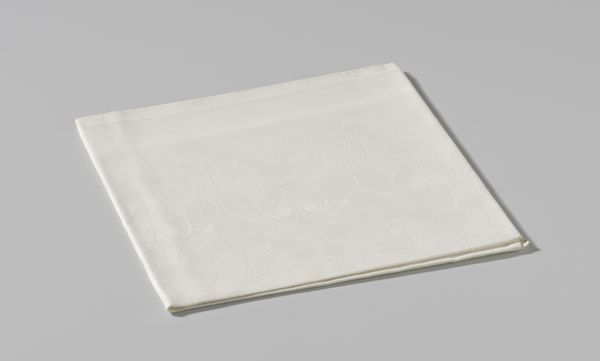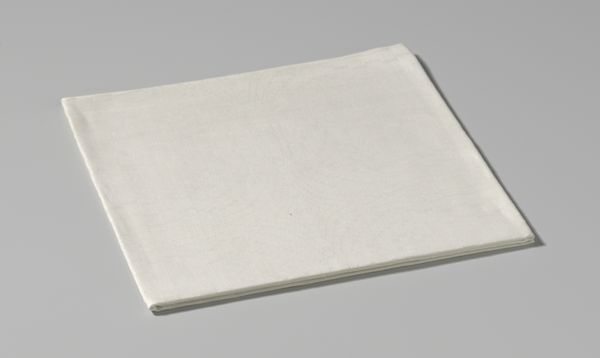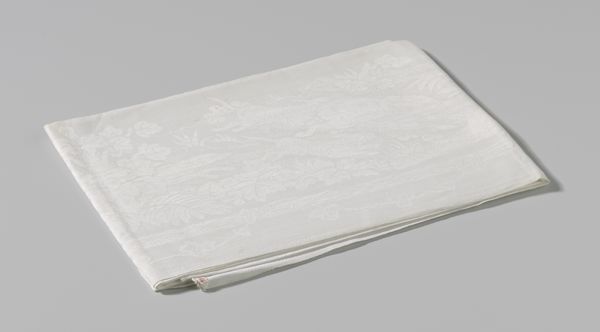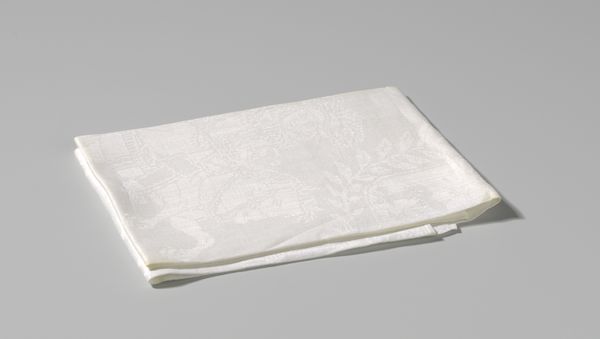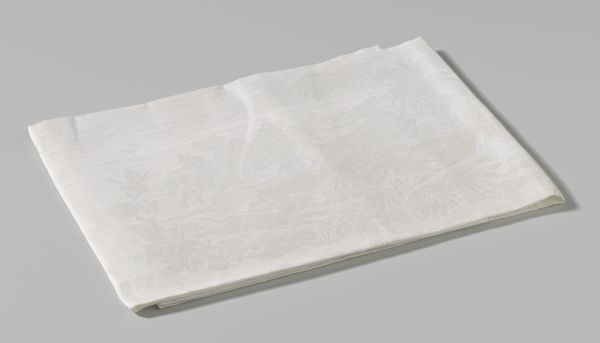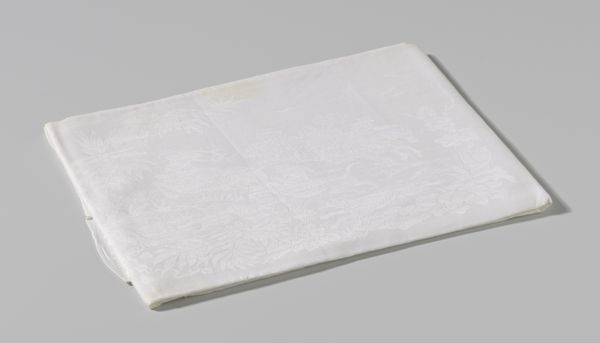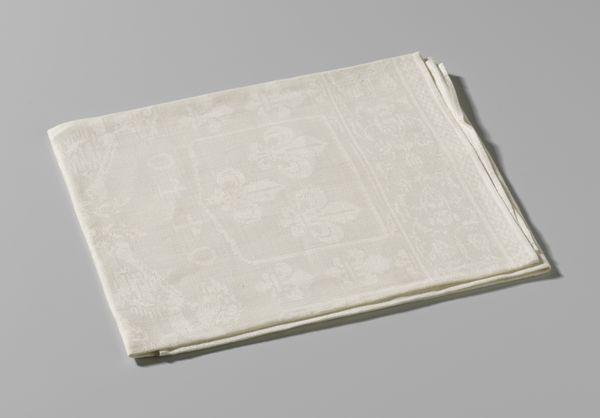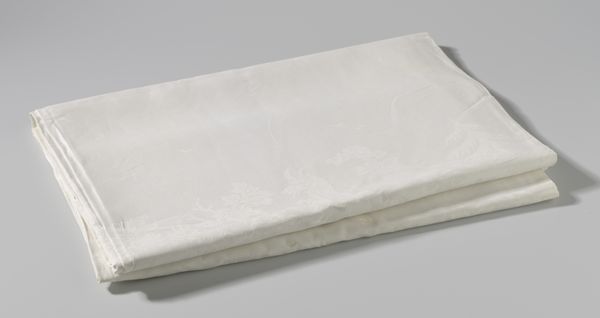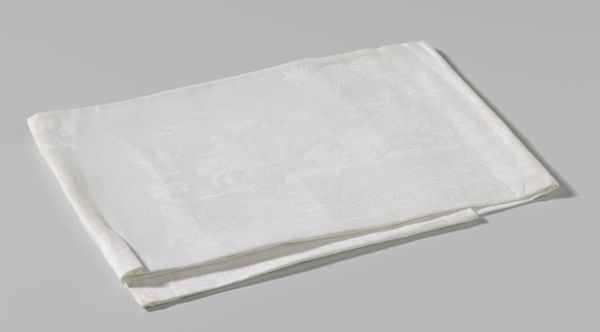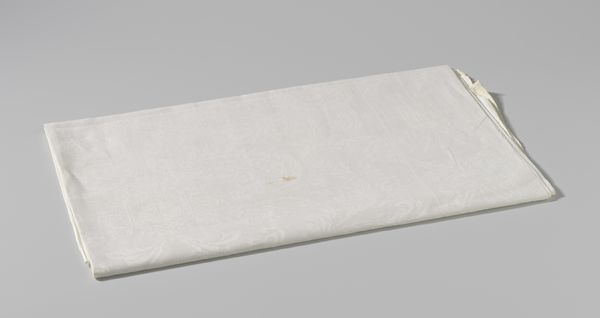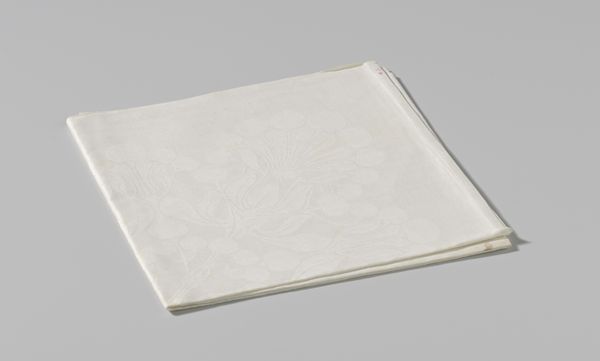
textile
#
textile
#
geometric
Dimensions: length 115.0 cm, width 85.0 cm
Copyright: Rijks Museum: Open Domain
Editor: This is a textile piece, a napkin to be precise, called "Servet met het familiewapen Van der Dussen," made around 1870 by Firma J. Maas. It’s quite simple, almost austere in its presentation. What does a seemingly mundane object like this tell us? Curator: That’s a keen observation. The relative simplicity of the design—geometric and bearing a family crest—speaks volumes about social identity and the construction of power through lineage. Objects like these aren't merely functional; they served as declarations of belonging and status within a very particular social hierarchy. How might the act of dining, with this object, have functioned as a social performance? Editor: I never thought of dining as performance. The crest does make it feel like more than just a napkin; it feels like a deliberate symbol of family identity. But was this common at the time? Curator: Precisely. The practice of commissioning such items, embellished with heraldic symbols, reflected a deep engagement with lineage and historical narratives. It points to a cultural environment where these markers of identity were highly valued. We see the “public” display of family and its importance placed on ordinary things. Considering it was made by a firm suggests broader production and wider acceptance of this culture, doesn't it? Editor: Absolutely! It gives a context to the historical period as more than just dates and names, and as how individuals express themselves in their domestic spheres. Curator: Right, it highlights how personal objects contributed to the construction of broader social and political landscapes. Now, I’m thinking differently about the power dynamics implicit in everyday life! Editor: Exactly. It goes beyond simple function, shaping how we understand history through everyday things!
Comments
No comments
Be the first to comment and join the conversation on the ultimate creative platform.
